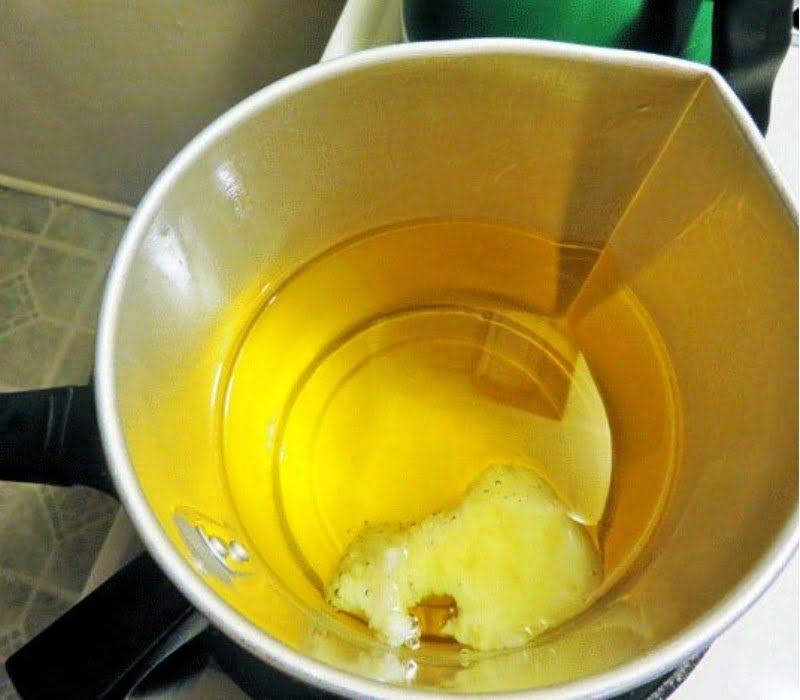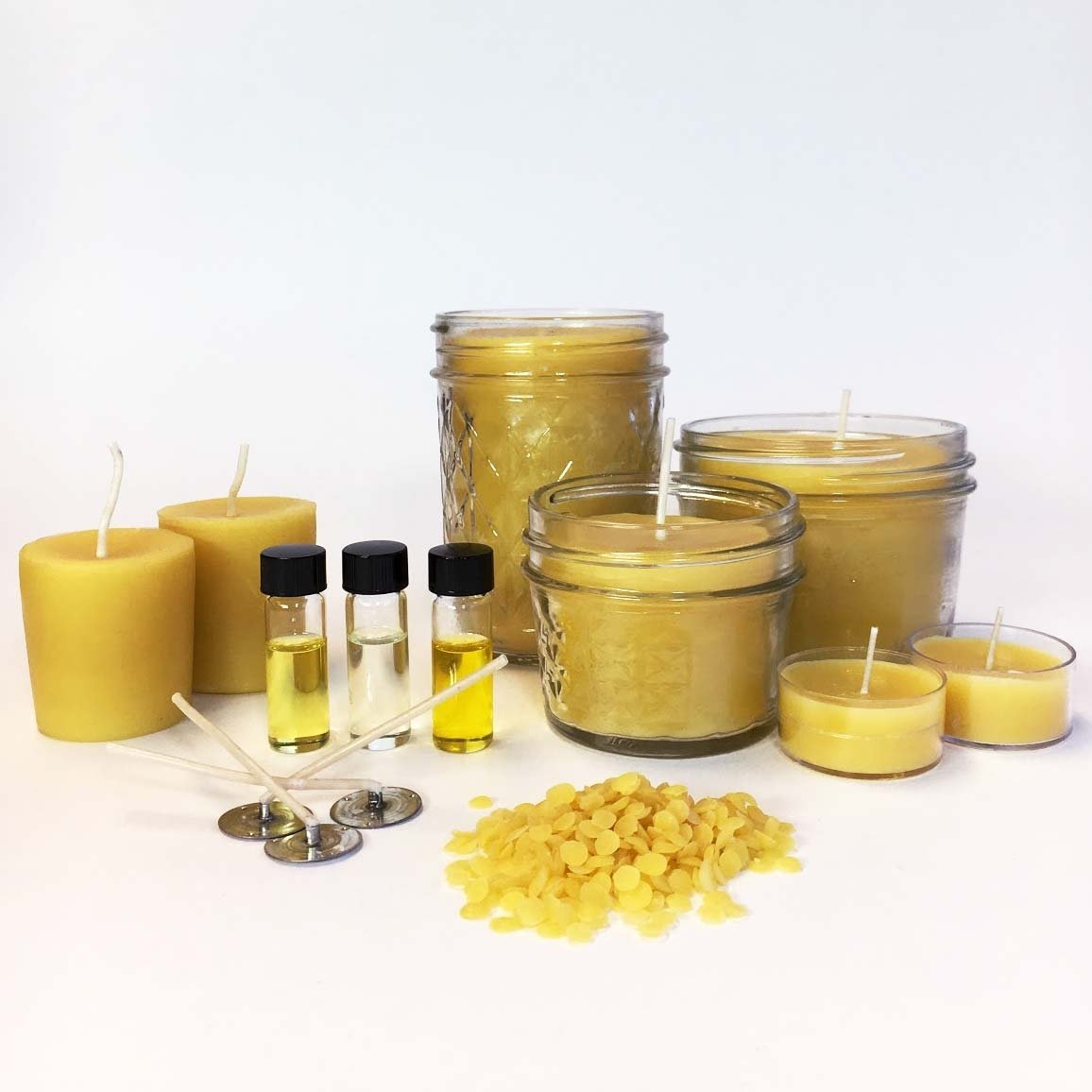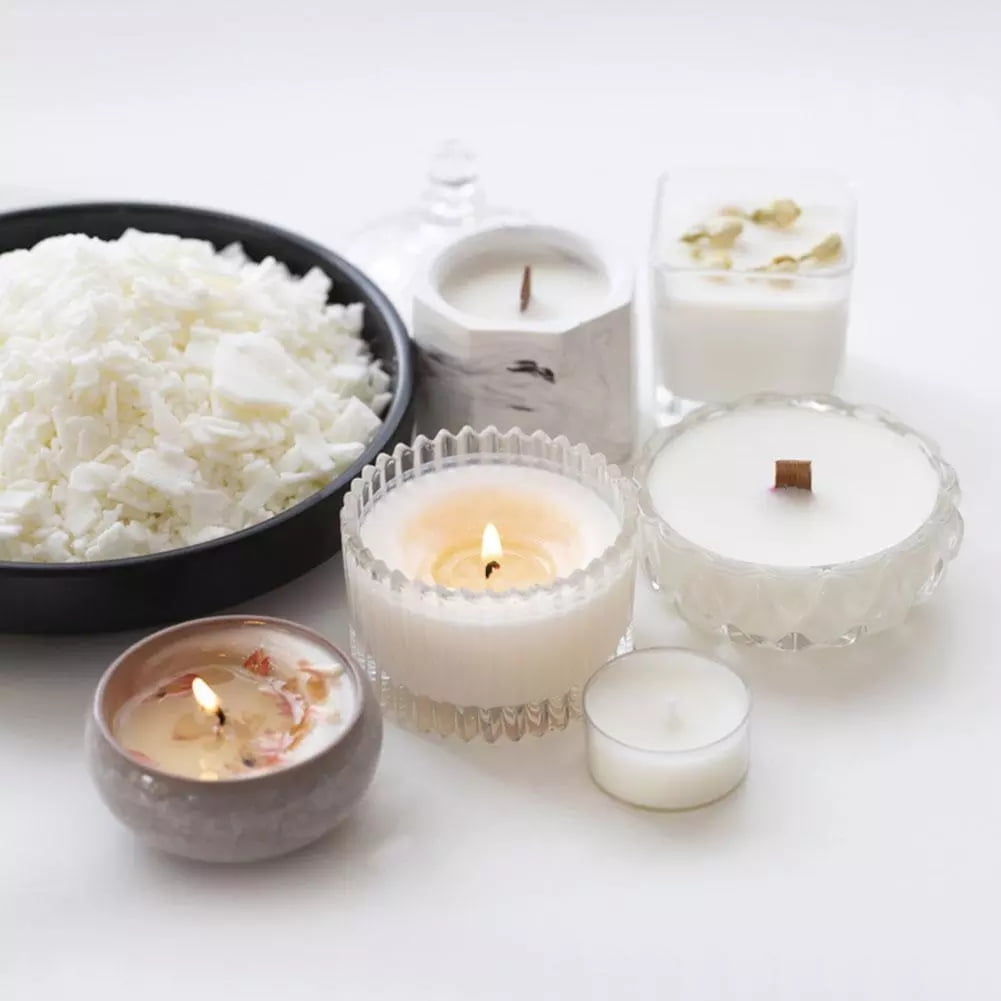Candle making is an ancient art form that has provided warmth, light and ambiance to our homes for centuries. While traditional candles are made using fragrance oils, there is a growing interest in using essential oils to enhance their fragrance and therapeutic benefits. This article delves into the possibilities and considerations of incorporating essential oils into candle making.
Using essential oils in candle making opens up a whole new world of scents and experiences. These natural plant extracts offer a wide range of aromas, from calming lavender to invigorating citrus, allowing you to create unique and personalized scents for your candles. Furthermore, essential oils are known for their potential therapeutic benefits, such as promoting relaxation, reducing stress or improving focus. By infusing these oils into your candles, you can enhance the mood and atmosphere in your living space.
Before we dive deeper into the topic, it’s important to understand what essential oils actually are. Essential oils are highly concentrated plant extracts obtained through various methods like steam distillation or cold-pressing. They capture the essence of a plant’s aroma or flavor and contain its beneficial properties. Due to their potency, it’s crucial to handle essential oils with care and respect.
In the following sections of this article, we will explore the science behind how essential oils work in candle making, factors to consider when choosing the right oil for your candles, safety precautions you should take when handling them, and methods for incorporating them into your candle-making process. We will also discuss how you can blend different essential oils together to create captivating fragrances for your candles and how to enhance their therapeutic benefits.
Finally, we’ll address some frequently asked questions related to using essential oils in candle making.
By embracing the beautiful possibilities of incorporating essential oils into your candle making practice, you can elevate both the aesthetic appeal and sensory experience of your candles. So, let’s embark on this aromatic journey and discover the wonders that essential oils can bring to your candle creations.
Understanding Essential Oils
Essential oils are highly concentrated extracts derived from plants, and they have been used for various purposes for centuries. These oils are known for their unique and captivating aromas, as well as their potential health benefits. In recent years, there has been a growing interest in using essential oils in candle making to create beautifully scented candles that not only provide ambiance but also have therapeutic effects.
To understand essential oils better, it is important to know the basics. Essential oils are extracted from different parts of plants, such as the leaves, flowers, stems, or roots, through methods like steam distillation or cold pressing. Each essential oil has its own specific chemical composition, which determines its aroma and potential benefits.
When incorporating essential oils into candle making, it is crucial to choose high-quality oils. Look for oils that are 100% pure and free from synthetic additives or fillers. Additionally, opt for oils that have been tested for purity and potency by reputable third-party organizations.
Some popular essential oils that are commonly used in candle making include lavender, eucalyptus, lemon, peppermint, and vanilla. Each oil has its own unique scent profile and potential benefits. For example, lavender oil is known for its calming properties and is often used in candles meant to promote relaxation and sleep.
Incorporating essential oils into your candle making process can add an extra dimension of fragrance and benefit to your creations. From creating a soothing ambiance to promoting a sense of well-being with aromatherapy effects, understanding the basics of essential oils will open up a world of possibilities when it comes to designing your own fragrant candles.
The Science Behind Essential Oils
Essential oils are not only popular for their aromatic qualities but also for the therapeutic benefits they offer. When it comes to candle making, understanding the science behind essential oils can help you make informed choices and create candles that not only smell amazing but also provide a delightful experience.
One important aspect of essential oils is their volatility. Volatility refers to how easily a substance evaporates at room temperature, and this characteristic plays a key role in candle making. When you add essential oils to molten wax, the heat causes the oils to evaporate. As the candle burns, the fragrance is released into the air, creating a pleasant aroma in your space.
The chemical composition of essential oils also contributes to their effectiveness in candle making. Essential oils are made up of various volatile organic compounds (VOCs), which are responsible for their scent and therapeutic properties. These VOCs interact with the surrounding air molecules as they evaporate from the candle, spreading their fragrance throughout the room.
To capitalize on these scientific principles, it’s important to choose high-quality essential oils that have been properly distilled and sourced. Look for oils that are pure and free from any synthetic additives or dilutions. Additionally, consider the specific scent notes and properties of each oil when selecting them for your candles.
Some oils may have a stronger scent throw while others may offer specific therapeutic benefits. By understanding how different essential oils work, you can create candles that cater to specific preferences or desired effects.
Overall, understanding the science behind essential oils allows candle makers to harness their power and create truly enchanting products. By carefully selecting high-quality oils and utilizing their unique characteristics, you can elevate your candle-making journey and bring beautiful aromas into people’s lives.
Choosing the Right Essential Oil
When it comes to choosing the right essential oil for your candle making venture, there are several factors that you need to consider. While the type of fragrance is a matter of personal preference, there are other aspects that can greatly impact the quality and performance of your candles. Here are some key factors to keep in mind when selecting essential oils for candle making:
- Scent Intensity: One important factor to consider is the potency or strength of the scent. Some essential oils have a stronger aroma than others, which means you may need to use less oil to achieve the desired fragrance in your candles. Keep in mind that certain scents can also become overpowering or even unpleasant when they are too strong, so it’s important to strike a balance.
- Fragrance Profile: Each essential oil has its own unique fragrance profile, ranging from floral and citrusy to woody and spicy. Consider the overall theme or mood you want your candles to evoke and choose essential oils that align with that vision. Experimenting with different combinations can help you create custom blends and signature scents.
- Compatibility with Wax: Not all essential oils blend well with wax, so it’s crucial to ensure compatibility before adding them to your candles. Some oils may cause discoloration, affect burn properties, or even compromise the safety of your candles if not used properly. Researching and testing different essential oils will help you determine which ones work best with your chosen wax.
- Sustainability and Sourcing: Another factor worth considering is sustainability and sourcing practices associated with different essential oils. Opting for ethically sourced and sustainable options not only supports responsible farming practices but also contributes towards environmental conservation.
It’s important to note that while essential oils offer numerous benefits in candle making, their effectiveness can vary depending on individual preferences, candle-making techniques, and even geographical location. Therefore, experimentation is key to finding the perfect essential oil for your candles. Remember to always follow recommended usage guidelines and consider seeking advice from experienced candle makers or fragrance experts to ensure you make the best choices for your creations.
Essential Oil Safety
When using essential oils in candle making, it is important to take certain precautions to ensure safety. Essential oils are highly concentrated extracts from plants and possess various properties such as fragrance and therapeutic benefits that can enhance the quality of candles. However, they also pose potential risks if not handled properly.
One important precaution to consider is the flash point of essential oils. The flash point refers to the temperature at which a substance ignites when exposed to an open flame or spark. Different essential oils have different flash points, and it is crucial to select oils with higher flash points for candle making. Oils with low flash points may cause the candle to ignite or burn unevenly, leading to accidents.
Another safety consideration is allergic reactions. Some individuals may be sensitive or allergic to specific essential oils. It is recommended to perform a patch test before incorporating any new oil into your candles. Apply a small amount of diluted oil on the skin and observe for any adverse reactions within 24 hours. If any irritation occurs, it is best to avoid using that particular oil in your candles.
In addition, it is important to handle essential oils with care and store them properly. These oils are flammable and should be kept away from open flames or heat sources. Ensure that containers are tightly sealed when not in use, as exposure to air can cause oxidation and reduce their quality. Label each container clearly with the name of the oil and its expiration date, as some essential oils may lose their potency over time.
By taking these precautions, you can ensure a safe candle making process when using essential oils. It is always better to prioritize safety for both yourself and those who will be using your candles. With proper handling and storage practices, you can enjoy the benefits of essential oils while creating beautiful and aromatic candles for personal use or gifting purposes.
Essential Oil Blending
Blending essential oils to create unique and captivating aromas is one of the most exciting aspects of using essential oils in candle making. By combining different oils, you can customize the scent profile of your candles and create a truly one-of-a-kind experience for yourself or your customers. In this section, we will explore the art of essential oil blending and provide some tips and techniques to help you create exquisite aromas for your candles.
Understanding Scent Families
Before diving into the actual blending process, it is important to understand scent families. Essential oils are typically categorized into different scent families based on their aromatic characteristics. The main scent families include floral, citrus, woody, herbal, spicy, and resinous. Each family has its own distinct characteristics and blending essential oils from different families can result in beautifully complex scents.
When blending essential oils, it is crucial to consider the scent notes of each oil. A perfume usually consists of top notes, middle notes (also known as heart notes), and base notes. Top notes are lighter, more volatile oils that provide the initial impression of a scent but dissipate relatively quickly.
Middle notes have a medium staying power and add body to the fragrance. Base notes are heavier oils with a longer staying power that anchor the fragrance and give it depth and warmth.
Blending Techniques
There are several techniques you can use when blending essential oils for your candles:
- The Layering Technique: This involves adding individual drops of different essential oils directly onto cotton balls or unscented blotting strips. Allow each oil to dry before adding another one until you achieve your desired blend.
- The Dilution Technique: Dilute your chosen essential oils with a carrier oil such as jojoba oil or almond oil before blending them together. This technique allows for more control over the final scent and makes it easier to adjust the ratios.
- The “Three Note” Rule: Start with three essential oils, one from each scent family – top note, middle note, and base note. Experiment with different ratios until you find a blend that resonates with you. From there, you can add additional oils if desired.
Remember to keep track of the oils used and the ratios in order to reproduce successful blends in the future.
Creating Signature Blends
Once you are familiar with blending techniques, let your creativity run wild. Experiment with different combinations of essential oils to create your own signature blends. Consider the mood or atmosphere you want to set with your candle – do you want a calming, relaxing scent for a spa-like experience? Or perhaps an invigorating blend for an energizing ambiance? Allow the unique properties of each essential oil to inspire your creativity and turn your candles into aromatic works of art.
By mastering the art of essential oil blending, you can elevate your candle making hobby or business to new heights. Customized scents will not only enhance the overall experience for yourself or your customers but also set your candles apart from mass-produced alternatives. Enjoy the journey of discovering beautiful aromas and creating exquisite blends that will fill any space with delightful fragrances.
Methods of Incorporating Essential Oils in Candle Making
In candle making, incorporating essential oils is a popular method to add fragrance and create unique scents. Here is a step-by-step guide on how to effectively incorporate essential oils into your candle-making process.
- Choose the right type and amount of essential oil: When selecting an essential oil for your candles, consider the scent, strength, and compatibility with other fragrances. It’s important to use high-quality essential oils specifically designed for candle making. As a general rule of thumb, use 1 ounce (30 mL) of essential oil per pound (450 grams) of wax for a strong scent, or half that amount for a milder scent.
- Heat the wax: Begin by melting your candle wax in a double boiler or a microwave-safe container. Follow the instructions provided with your specific type of wax to ensure proper heating temperature and procedure.
- Add essential oils to melted wax: Once the wax has reached the desired melting point, remove it from heat and let it cool slightly before adding the essential oils. Stir in the desired amount of essential oil gently but thoroughly to distribute it evenly throughout the wax.
- Test for fragrance strength: Before pouring the scented wax into your containers, perform a fragrance test by dipping an unlit candle wick into the melted wax mixture and letting it dry completely. Once dry, light the wick to test the fragrance strength. Adjust if necessary by adding more or less essential oil based on your preference.
- Pour scented wax into containers: Carefully pour the scented wax mixture into your chosen containers while holding the wick straight in place. Be sure not to overfill them as this can cause uneven burning.
- Cool and cure: Allow your candles to cool and cure for at least 24-48 hours before lighting them for optimal scent throw and burn performance.
| Method | Description |
|---|---|
| Fragrance Load Method | Adding a certain percentage of essential oil to the total weight of the wax. This allows for easy adjustment and consistency in scent strength. |
| Dipping Method | Dipping a wick into melted wax infused with essential oils to test the fragrance strength before pouring the scented wax into containers. |
| Foaming Technique | Blending essential oils with a foaming agent to create candles that release fragrance as they burn, enhancing scent throw and longevity. |
By following this step-by-step guide and considering different methods, you can effectively incorporate essential oils into your candle making process and create beautifully scented candles. Experimenting with different essential oil combinations will allow you to customize your candles and create unique aromas that suit your preferences or the occasion.
Enhancing Therapeutic Benefits
Candles have long been used for their soothing and calming effects. The addition of essential oils to candle making not only enhances the fragrance but also provides additional therapeutic benefits. This section will explore the health advantages of utilizing essential oils in candles, highlighting their potential to promote relaxation, improve mood, and relieve stress.
Essential oils are highly concentrated plant extracts that capture the natural benefits of various plants and flowers. When incorporated into candles, these oils release their aromatic compounds into the air when the candle is burned. As a result, the therapeutic properties of the essential oils are inhaled and can have a positive impact on physical and emotional well-being.
One of the major health advantages of using essential oils in candles is their ability to promote relaxation. Certain essential oils, such as lavender and chamomile, have calming properties that can help ease anxiety, reduce tension, and induce a sense of tranquility. These scents can be particularly beneficial when used during meditation or before bedtime to create a peaceful atmosphere.
In addition to promoting relaxation, essential oils in candles can also improve mood and uplift spirits. Citrus-based essential oils like orange and lemon are known for their energizing properties that can help combat feelings of tiredness or low motivation. On the other hand, floral scents such as rose and jasmine are believed to have mood-enhancing effects that can evoke feelings of happiness and contentment.
| Health Advantages | Examples |
|---|---|
| Promotes relaxation | Lavender, chamomile |
| Improves mood | Orange, lemon, rose, jasmine |
| Relieves stress | Ylang-ylang, bergamot |
Frequently Asked Questions
As the popularity of essential oils continues to grow, many candle makers are exploring the possibility of incorporating them into their creations. However, there are several common queries that arise when it comes to using essential oils in candle making. In this section, we will address these frequently asked questions and provide answers to help you navigate this exciting endeavor.
One common question is whether essential oils can be used directly in candles without any dilution. While essential oils possess strong scents, they are highly concentrated and can potentially cause skin sensitivities or allergic reactions if used undiluted. It is generally recommended to dilute essential oils before adding them to your candle recipe. Diluting with a carrier oil or a fragrance oil designed for candle making helps ensure proper dispersion and provides a more balanced scent throughout the candle.
Another frequently asked question is whether all essential oils are suitable for candle making. Not all essential oils are created equal when it comes to candle making. Some essential oils have low flash points, which means they have a lower temperature at which they can ignite.
It is important to choose essential oils with higher flash points to ensure safety during the burning process. Additionally, not all essential oils have strong enough scents to effectively fragrance a candle, so it’s important to select oils with aromatic qualities that will carry well in the wax.
Lastly, a common concern among beginners is determining how much essential oil should be added to their candles. The amount of essential oil needed depends on various factors such as the type of wax being used, the desired strength of scent throw, and personal preference.
As a general guideline, a 6-8% fragrance load is commonly recommended for most waxes. However, it’s important to research specific guidelines for each individual oil and conduct small test batches to fine-tune your desired fragrance level.
By addressing these commonly asked questions about using essential oils in candle making, you can gain a better understanding and feel more confident in incorporating these aromatic ingredients into your creations. Remember to always prioritize safety and follow proper guidelines when working with essential oils to ensure an enjoyable and successful candle making experience.
Conclusion
In conclusion, incorporating essential oils into candle making opens up a world of possibilities for creating beautiful and scent-sational candles. The use of essential oils not only adds a delightful aroma to your candles but also offers various therapeutic benefits. However, it is important to understand and consider the science behind essential oils, choose the right oil for your desired effect, and take necessary safety precautions.
Understanding the properties and characteristics of different essential oils is crucial in creating exquisite aromas for your candles. Each oil has its own unique scent profile and therapeutic benefits, allowing you to customize your candles according to your preferences or specific needs. Additionally, blending different essential oils can create complex and harmonious scents that are sure to enhance the ambiance and atmosphere of any space.
When incorporating essential oils into candle making, it is vital to prioritize safety. Essential oils are highly concentrated substances that should be handled with caution. It is recommended to research their individual properties and usage guidelines before using them in candles. Taking proper precautions such as using suitable dilutions, keeping away from heat sources while blending, and labeling your creations correctly will ensure a safe and enjoyable candle-making experience.
Overall, the beauty and scent-sational possibilities of essential oils in candle making are truly remarkable. From creating captivating aromas to harnessing their therapeutic benefits, incorporating these natural extracts can elevate your candle-making craft to new heights. So why not embrace this opportunity to infuse your candles with delightful fragrances and indulge in the soothing ambiance they offer? Start exploring the world of essential oil-infused candles today.
Frequently Asked Questions
Can you use essential oils in soy candles?
Yes, essential oils can be used in soy candles. Soy wax is a popular choice for candle making as it has a lower melting point and holds fragrance well. When using essential oils in soy candles, it’s important to consider the flash point of the oil, which is the temperature at which it can ignite.
Essential oils with low flash points should be added when the soy wax has cooled down slightly to prevent any potential hazards. It’s also recommended to use a reliable fragrance calculator or consult a professional candle maker for appropriate usage rates to ensure that the scent is not overpowering or causing any negative effects on the quality of the candle.
Can I add essential oils to wax to make candles?
Absolutely! Adding essential oils to wax is a great way to customize your candles and create unique scents. When making candles at home, you can melt your chosen wax (such as soy or beeswax) and add essential oils once the wax has reached an appropriate temperature for fragrance incorporation.
However, it’s important to note that different waxes have different properties, so it’s wise to research and understand how each type of wax interacts with essential oils before combining them together. Proper measuring and testing are crucial to achieve a well-balanced scent without overpowering or compromising the quality of your candles.
Which essential oil is good for candle making?
The choice of essential oil for candle making depends on personal preference and desired effects. There are many options available, but some popular choices include lavender, eucalyptus, citrus (such as orange or lemon), vanilla, and peppermint. Lavender is often favored for its calming properties and soothing aroma, while eucalyptus offers a refreshing scent that can promote relaxation during meditation or after a long day.
Citrus oils provide an uplifting and invigorating atmosphere, while vanilla adds warmth and sweetness to candle scents. Peppermint is known for its invigorating and energizing qualities but should be used sparingly due to its strong fragrance. It’s important to experiment and find the essential oils that resonate with your preferences and create a fragrance combination that brings joy and harmony to your candle-making experience.

Welcome to my candle making blog! In this blog, I will be sharing my tips and tricks for making candles. I will also be sharing some of my favorite recipes.





